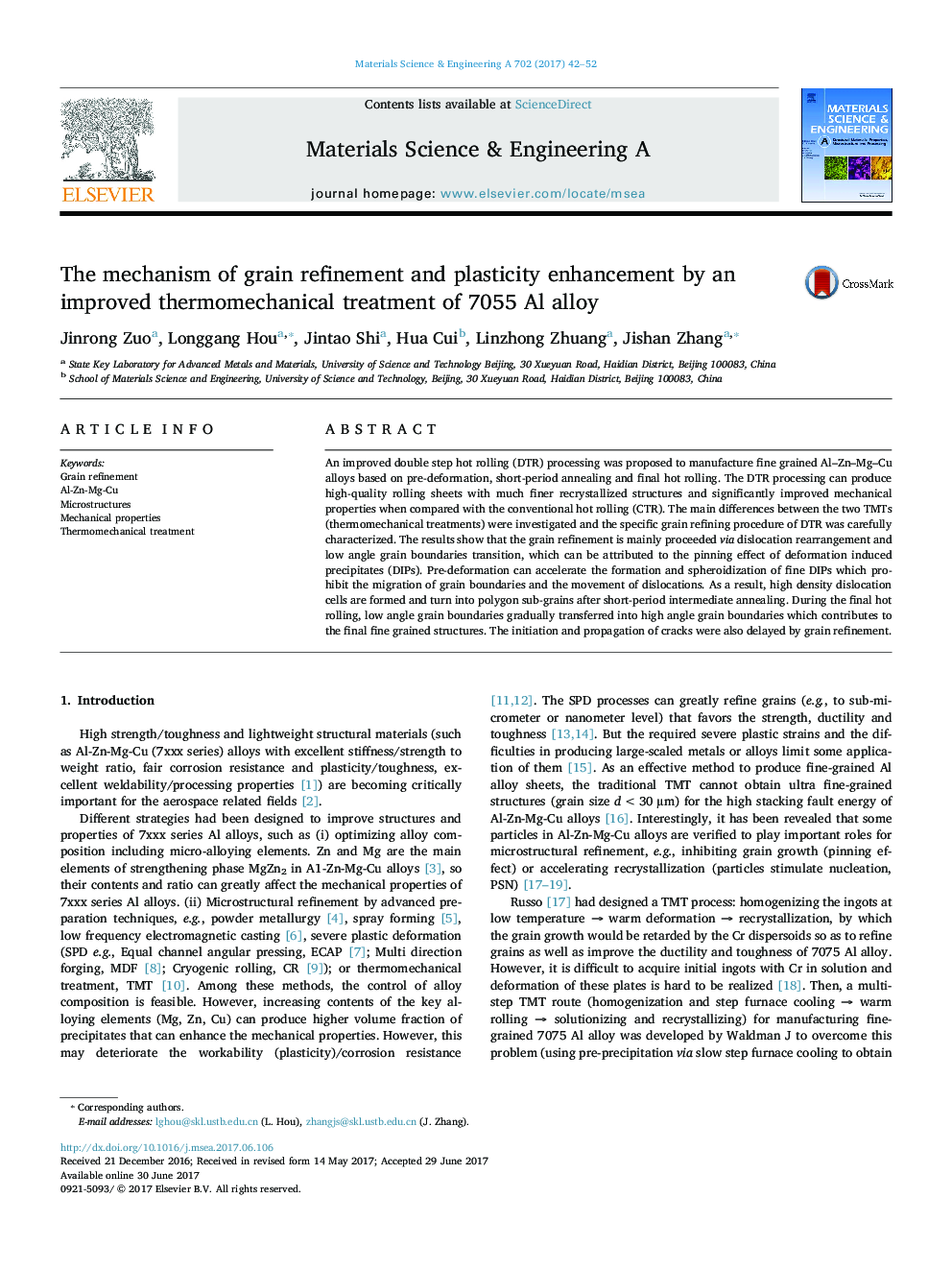| Article ID | Journal | Published Year | Pages | File Type |
|---|---|---|---|---|
| 5455815 | Materials Science and Engineering: A | 2017 | 11 Pages |
Abstract
An improved double step hot rolling (DTR) processing was proposed to manufacture fine grained Al-Zn-Mg-Cu alloys based on pre-deformation, short-period annealing and final hot rolling. The DTR processing can produce high-quality rolling sheets with much finer recrystallized structures and significantly improved mechanical properties when compared with the conventional hot rolling (CTR). The main differences between the two TMTs (thermomechanical treatments) were investigated and the specific grain refining procedure of DTR was carefully characterized. The results show that the grain refinement is mainly proceeded via dislocation rearrangement and low angle grain boundaries transition, which can be attributed to the pinning effect of deformation induced precipitates (DIPs). Pre-deformation can accelerate the formation and spheroidization of fine DIPs which prohibit the migration of grain boundaries and the movement of dislocations. As a result, high density dislocation cells are formed and turn into polygon sub-grains after short-period intermediate annealing. During the final hot rolling, low angle grain boundaries gradually transferred into high angle grain boundaries which contributes to the final fine grained structures. The initiation and propagation of cracks were also delayed by grain refinement.
Related Topics
Physical Sciences and Engineering
Materials Science
Materials Science (General)
Authors
Jinrong Zuo, Longgang Hou, Jintao Shi, Hua Cui, Linzhong Zhuang, Jishan Zhang,
